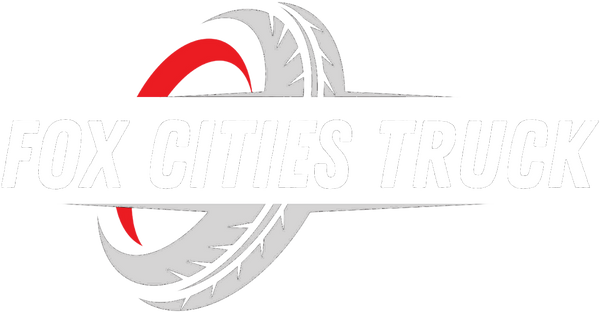
How to Maintain Your Truck’s Cooling System
Share
When you’re driving a truck, whether for work or personal use, one thing you never want to see is that dreaded temperature warning light blinking on your dashboard. It’s a clear sign that your truck’s cooling system might be in trouble. But what if you could prevent that from happening altogether?
Think of your truck’s cooling system like the human body’s sweat glands—it keeps things from overheating. Just like we hydrate and rest to avoid heatstroke, our trucks need regular care to avoid overheating. In this guide, we’ll walk through everything you need to know about truck cooling system maintenance—in plain English.
Importance of the Cooling System
Your truck's engine creates a lot of heat. Without a functioning cooling system, that heat has nowhere to go. The cooling system helps regulate the engine’s temperature, preventing it from overheating or freezing—depending on the season. Keeping it in top shape ensures your engine stays happy and healthy.
How the Cooling System Works
In simple terms, the cooling system circulates coolant (a mixture of water and antifreeze) through the engine. This absorbs heat and moves it to the radiator, where it's released into the air. It’s a continuous cycle—like your home’s AC but for your engine.
Signs Your Cooling System Needs Attention
How do you know something's wrong? Here are some common red flags:
- Temperature gauge stays high
- Steam from the hood
- Sweet or burnt smells
- Puddles of coolant under the truck
If you notice any of these, it’s time to act fast.
Regular Coolant Checks
Coolant is the lifeblood of the cooling system. Pop the hood and check the coolant level in the reservoir. Make sure it's between the "min" and "max" lines. If it’s low, top it off—but make sure the engine is cool before opening anything!
Flushing the Radiator
Over time, the coolant gets dirty, and rust or debris can build up inside the radiator. Flushing it every 30,000 miles (or as recommended by your manual) keeps things clean. It’s like giving your truck’s cooling system a detox.
Inspecting Hoses and Belts
Hoses carry coolant to and from the engine. Belts power the water pump. If they’re cracked, brittle, or bulging, they could fail at the worst time. Give them a squeeze and look for wear. Replace any that seem suspicious.
Checking the Radiator Cap
It might seem minor, but a faulty radiator cap can mess up the pressure in your cooling system. If the seal’s worn out or it's not holding pressure, replace it. It's a small fix that can prevent big issues.
Thermostat: The Small Part with Big Impact

The thermostat controls when the coolant flows. If it sticks closed, your engine will overheat fast. If it’s stuck open, your engine might not warm up properly. Replacing a bad thermostat is a simple fix that can prevent major damage.
Water Pump Maintenance
The water pump pushes coolant through the system. If it's leaking or making noise, it could be failing. Watch for coolant around the pump or odd sounds from the front of the engine. Don’t ignore it—a failed water pump can lead to engine failure.
Keep an Eye on the Temperature Gauge
Don’t wait for warning lights. Get in the habit of glancing at the temperature gauge while you drive. If it starts climbing higher than usual, something might be wrong.
Seasonal Cooling System Maintenance
Your cooling system has different needs in summer and winter. In hot months, make sure it’s clean and full. In winter, make sure the coolant has the right antifreeze ratio to prevent freezing.
What to Do If Your Truck Overheats
If your engine starts to overheat:
- Pull over safely
- Turn off the engine
- Let it cool down before opening the hood
- Never open the radiator cap while hot!
After it cools, check coolant levels and look for leaks.
Using the Right Type of Coolant
Not all coolants are the same. Use what your truck’s manual recommends. Mixing types or using the wrong one can damage your system. It’s like giving your truck the wrong medicine—it might make things worse.
Maintenance Schedule Checklist
Stay on top of your truck cooling system maintenance with a simple schedule:
- Every month: Check coolant level
- Every 6 months: Inspect hoses and belts
- Every 1-2 years: Flush radiator, check thermostat, inspect water pump
- As needed: Replace parts showing wear
Professional Inspection Tips
While DIY maintenance is great, getting a professional inspection once a year is smart. They can pressure test the system and check for hidden issues you might miss. Think of it as your truck’s annual check-up.
Conclusion
Your truck’s cooling system might not be the flashiest part of the vehicle, but it’s absolutely one of the most important. With a little time and attention, you can keep your truck running smoothly and avoid costly repairs. Remember, truck cooling system maintenance isn’t just about preventing problems—it’s about extending your truck’s life and giving you peace of mind on the road.
FAQs
1. How often should I check my truck's coolant level?
You should check it at least once a month, especially before long trips or during extreme temperatures.
2. What causes my truck’s engine to overheat?
Common causes include low coolant, a broken thermostat, leaking hoses, or a failing water pump.
3. Can I use water instead of coolant in an emergency?
Yes, temporarily—but only if you’re in a pinch. Water doesn’t protect against rust or freezing like coolant does.
4. How do I know if my radiator needs flushing?
If your coolant looks dirty, rusty, or you haven’t changed it in a couple of years, it’s time for a flush.
5. Is it okay to mix different types of coolant?
No, mixing can cause chemical reactions that form sludge or damage your cooling system. Stick with what your manual recommends.
